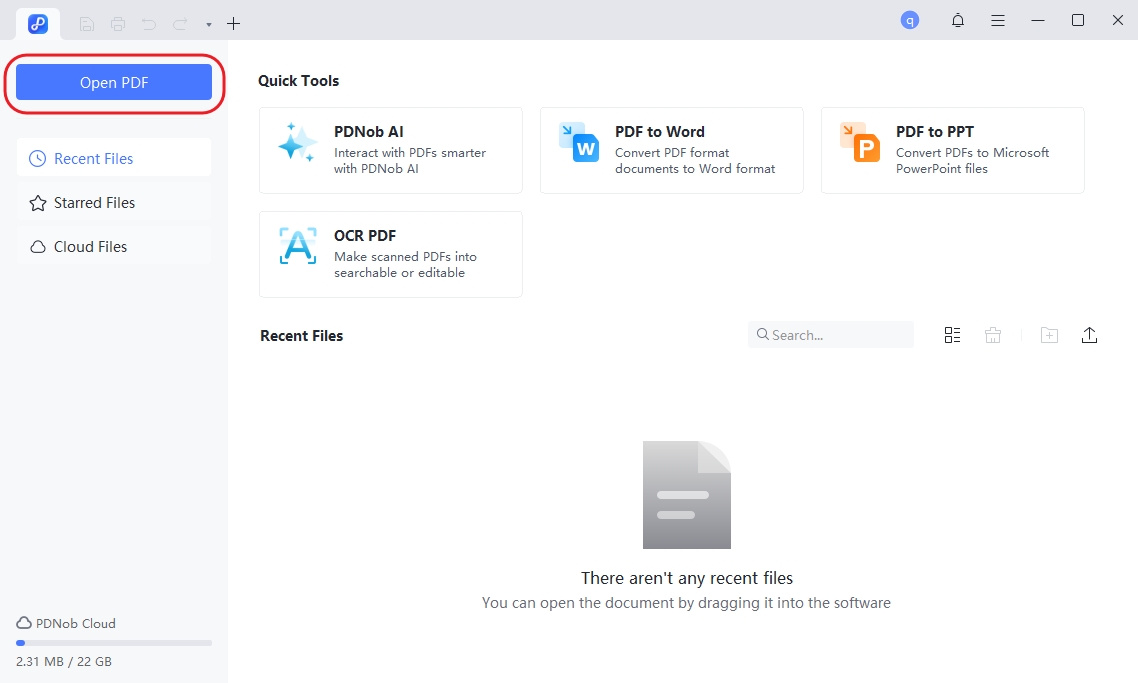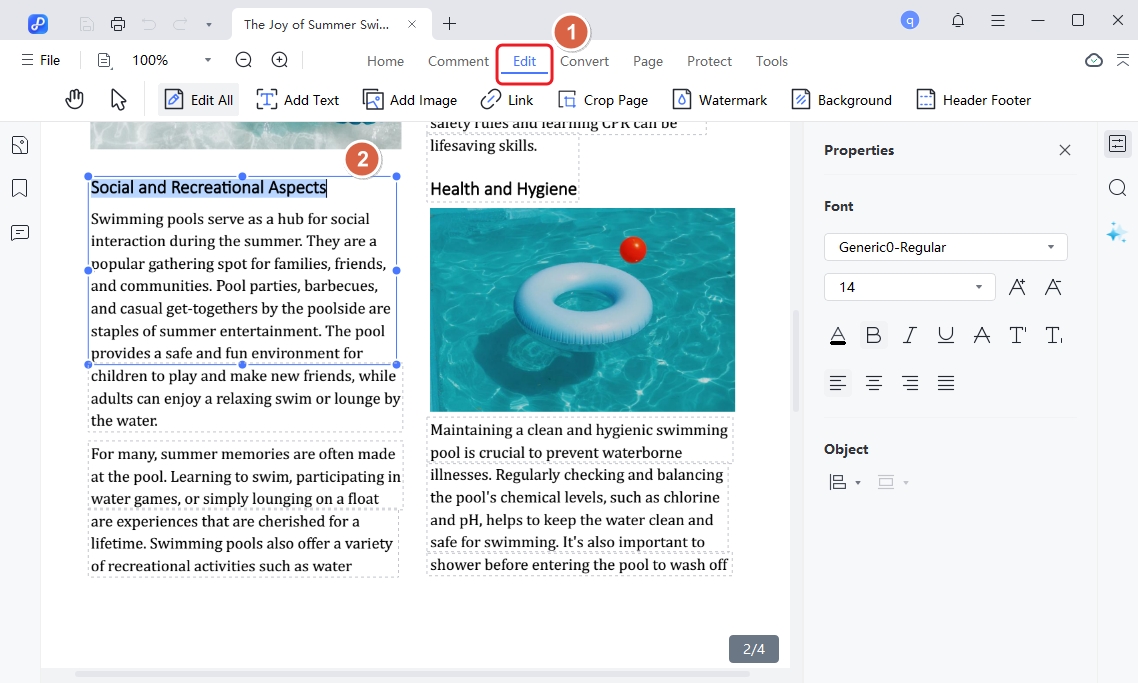AI-Powered PDNob PDF Editor
Smarter, Faster, Easier PDF Editor Software
AI-Powered PDNob PDF Editor
Edit & enhance PDF with Al
Have your research hit an obstacle because most needed materials exist behind expensive paywalls?
If you lack a clear understanding of the Open Access Button, our goal in this article is to tell you its functions. We’ll also share how can you use it in different ways, and related security matters.
The Open Access Button (OAB) helps users find academic articles hidden behind paywalls. It started as a student project to make research easier to access for everyone. Here are OAB’s core features:
If you’re speculating, “Is Open Access Button safe,” the answer is yes it’s a safe and legitimate tool for accessing academic articles.
The OAB legally connects users to free versions of articles and helps request content from authors when needed. The tool respects data privacy, only using email addresses to send requests without sharing personal information. It is also free from malware or adware, operating securely within open-access guidelines.
OAB has also an alternative service referred to as Unpaywall that helps users find free, legal versions of paywalled academic articles from open-access sources. However, both services differ regarding their functionality, data sources, and user experience. Here’s a breakdown of Open Access Button vs. Unpaywall services:
You can use the Open Access Button to access academic articles either online, or through a browser extension, or API. To learn the step-by-step process of using each method follow the instructions beneath:
The easiest way to use the Open Access Button is by operating it directly through its website, which requires no installation. You can enter an article’s DOI, title, or citation to search for its free version.
The online tool offers a simple, user-friendly interface and provides quick access to available articles. However, it also requires you to visit the website manually each time you wish to access an article, which may be less convenient than a browser extension.

With the Open Access Button Firefox or equivalent browser extensions, you can immediately access free articles. The browser extension will show instant alerts when an Open Access article version becomes available.
Thus, users benefit from faster operations because manual searches become unnecessary. However, remember the extensions only work with compatible browsers, and users might miss notifications if they don’t notice them. Here’s how to use an Open Access Button Browser Extension to acquire free articles:

If you want to search for lots of papers in a short time, the Open Access Button API automates searches for free academic papers. It’s useful for libraries and institutions and enables access without manual effort.
Moreover, it can also be customized to fit specific needs and supports scalable integration. However, the API requires programming skills and time for setup and implementation. Here’s how to use OAB API to automatically access free articles:
First, get an API Key. Though it’s optional but useful for tracking and support (sign up on the Open Access Button website).
Use the “REST JSON API” commands to find papers, get metadata, and request access. Here’s an example:
curl -X GET "https://api.openaccessbutton.org/find?id=10.1126/science.196.4287.293". (Here /find endpoint retrieves open-access article URLs).
curl -X GET "https://api.openaccessbutton.org/subscription?id=10.1126/science.196.4287.293&uid=YOUR_UI" (Here /subscription endpoint checks if an institution has access).
curl -X POST "https://api.openaccessbutton.org/metadata" -d '{"doi": "10.1126/science.196.4287.293"}' -H "Content-Type: application/json" (Here /metadata endpoint provides article details).
curl -X POST "https://api.openaccessbutton.org/metadata" -d '{"doi": "10.1126/science.196.4287.293"}' -H "Content-Type: application/json" (Here /request endpoint helps request articles from authors).

The API will return JSON data to you can parse and use in your application. Remember to be mindful of limiting requests to one per second to avoid issues.
If you have your own research paper to write or edit, nothing could be better than usingTenorshare PDNob. It can not only edit, convert, merge, or compress PDFs but can also summarize research papers, saving you time and energy that you would spend on reading material. Here are this tool’s advantages in detail:


No. Open Access articles are still copyrighted, either by the author or publisher. They follow copyright laws like subscription-based ones. However, authors may keep or transfer rights, depending on the publication agreement.
Whether Open Access articles need permission for reuse depends on their license. Many use Creative Commons, allowing different levels of reuse. While some need attribution or restrict commercial use. Therefore, always check the article’s license for details.
Yes. The reuse of Open Access images depends on the specific license that comes with the article. The CC BY license permits image reuse when authors get proper credit but the CC BY-NC license permits only non-commercial uses of the images. Therefore, review the article’s license before using its contents.
Publishing an article on Open Access boosts visibility and impact by making research freely available. However, it may require financial contributions by authors like article processing charges (APCs). The decision depends on both available funding and your educational objectives therefore evaluate before proceeding.
Researchers find the Open Access Button (OAB) to be an important tool that allows them to retrieve academic articles behind paywalls without charges. OAB offers users three access methods to find legal Open Access articles through its website, browser extension, and API.
Another tool that can help in your research is Tenorshare PDNob. It enables users to edit as well as organize and manage their research documents. Besides basic editing, this platform provides additional features for annotations along with citation addition, format transformation, and OCR functionality with AI-powered summation capabilities.


PDNob PDF Editor Software- Smarter, Faster, Easier
then write your review
Leave a Comment
Create your review for Tenorshare articles
By Jenefey Aaron
2025-04-17 / Knowledge
Rate now!